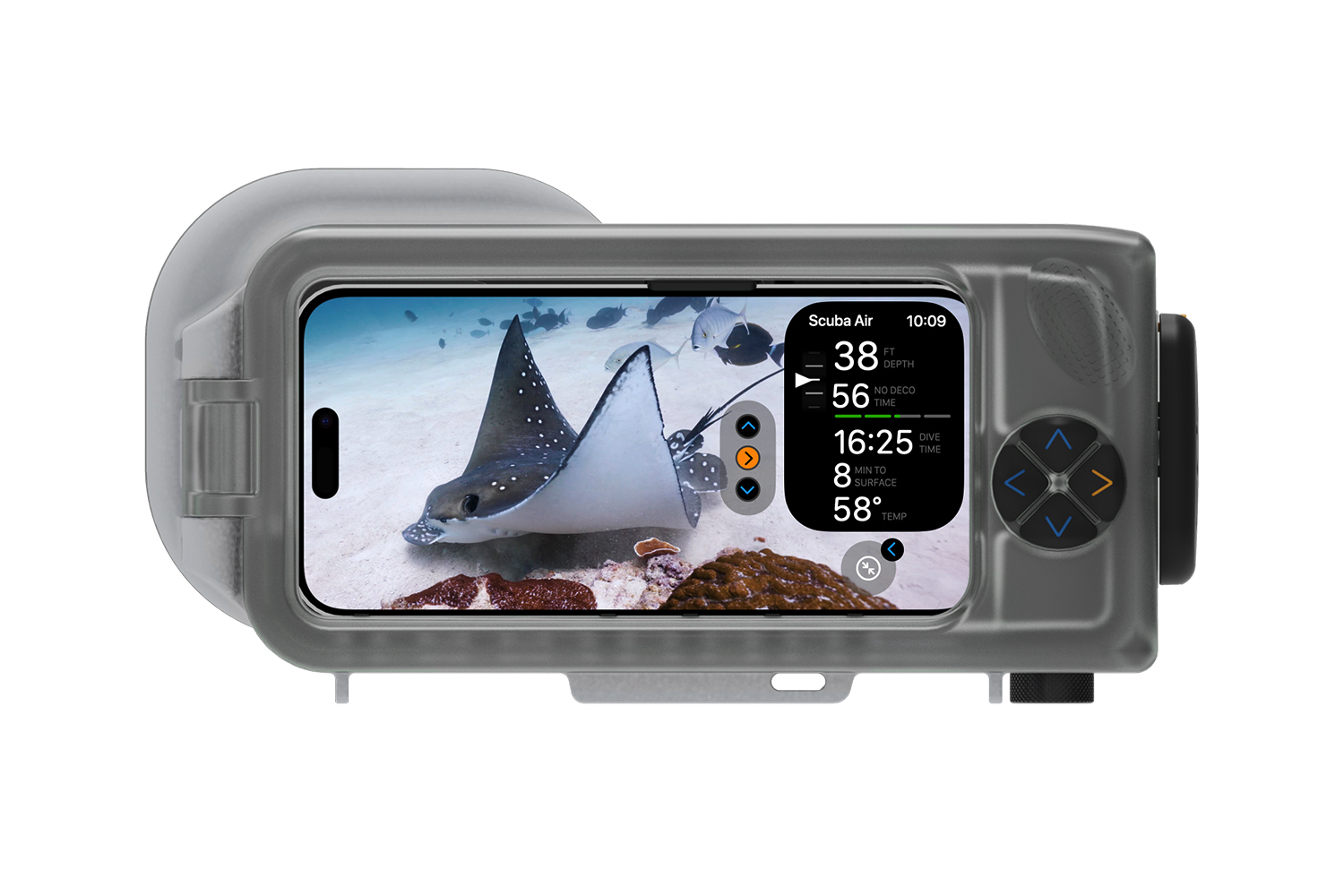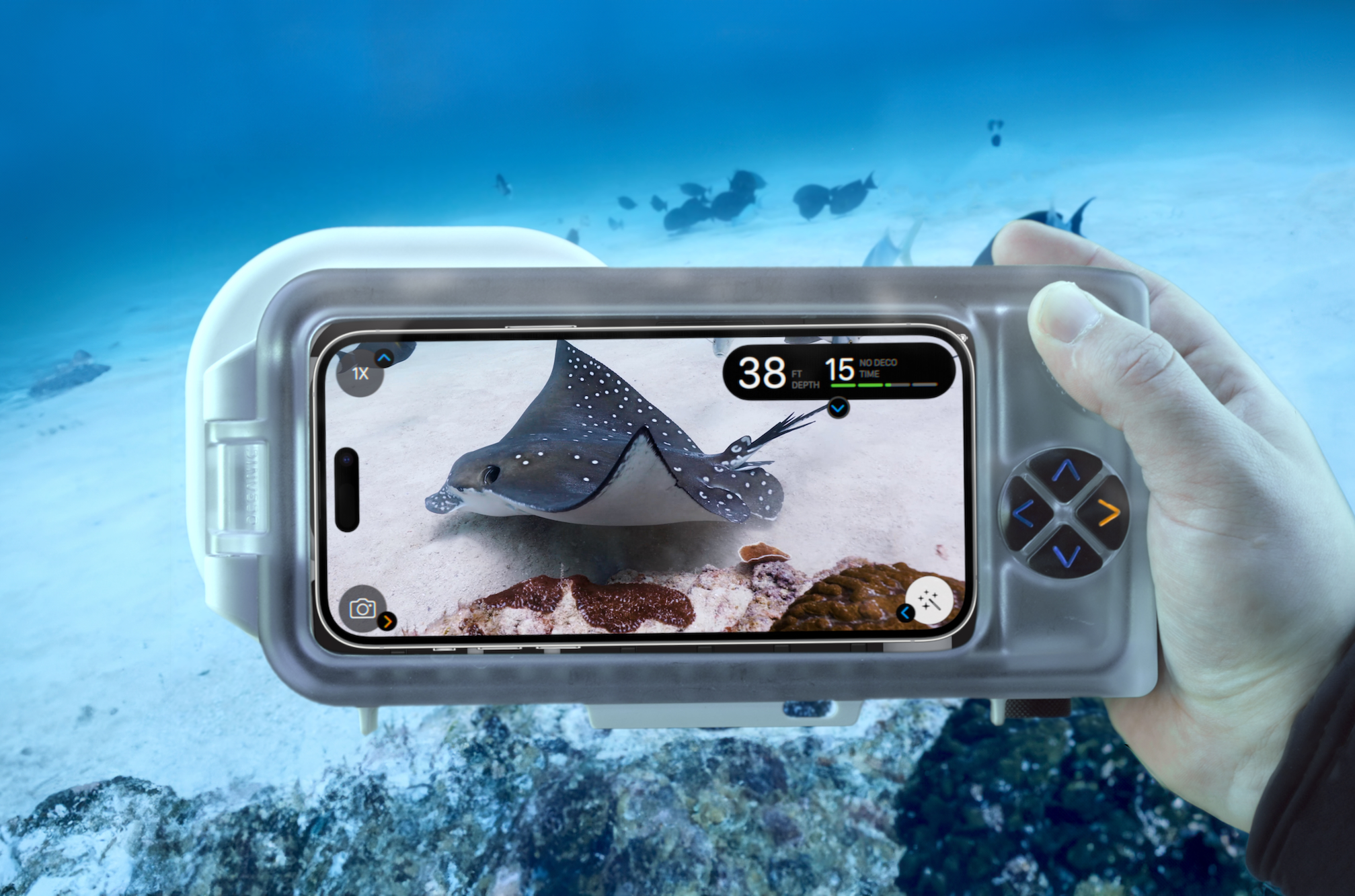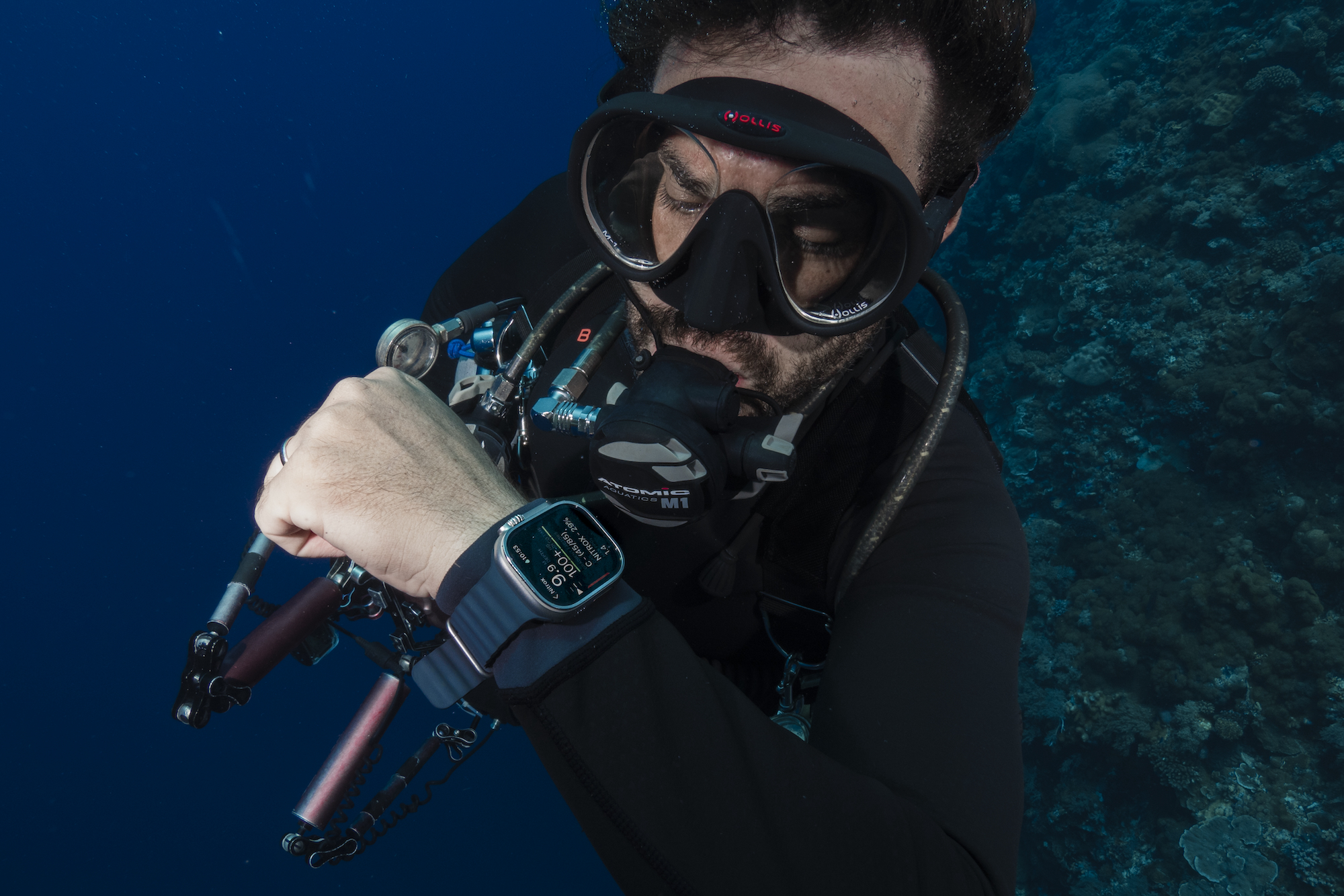
You’ve probably never seen an iPhone case like this before, and there’s a very good chance you’ve never used one like it before, either. It’s the Oceanic+ Dive Housing, and it seals your iPhone in a pressured environment to keep it safe so you take photos deep underwater without risking damage. What’s more, it turns your iPhone into a dive computer, and it works alongside your Apple Watch Ultra or Apple Watch Ultra 2.
You may be familiar with Oceanic+, the app that turns the Apple Watch Ultra into a dive computer. It’s being updated to version 2.0, and along with a suite of new features comes compatibility with the new Dive Housing. Put your iPhone inside it, and an automatic vacuum pump starts to seal it safely inside, a process completed after a few minutes and various leak tests. It’s then ready to be taken underwater to a depth of 60 meters and controlled using the Bluetooth-connected physical buttons on the case.

It works in two different ways. First, it makes the iPhone’s camera usable in an environment that would otherwise be impossible for it to function. It works with the main and wide-angle camera, plus the telephoto camera if your iPhone has the capability. All the cameras work for stills and video, which can be shot in 4K resolution at 30 frames per second (fps) or 60 fps. The basic functionality is free, but if you pay Oceanic+’s subscription, you get special color-correcting filters and other editing tools made to make your dive videos look their best.
The other way the Dive Housing works is to display Oceanic+’s dive data. Collected from built-in temperature and depth sensors, it’s shown onscreen all the time but can be minimized to concentrate on using the camera. Everything from depth data and GPS location to surface intervals and ascent rate is shown. It’s synced with your Apple Watch Ultra, which is recommended as the primary device when you’re diving, and can either be used as a backup dive computer or on its own if you don’t own the smartwatch.
Version 2.0 of the Oceanic+ app has a new home screen view, a location planner, a weight planner to quickly generate the amount of ballast required for your dive, and user-generated data on popular dive locations. The Free Dive mode has been updated when using the Apple Watch Ultra, providing masses of data including depth, speed, and dive time, plus alarms to alert you of different events and heart rate data at the beginning and end of your dive. A new Logbook feature provides a summary of all your dives, and the photos and videos taken with the Dive Housing can be added to your logs, creating a complete overview of the experience.
Obviously, Oceanic+ is a very specialist app, and the Dive Housing will only appeal to those interested in its functionality. But that doesn’t stop it from being a very impressive piece of kit — and one that builds on the amazing ability of the Apple Watch Ultra.
The Dive Housing is compatible with a wide range of iPhone models, right back to the iPhone X and even the iPhone SE (2022). The Oceanic+ app is free, but some features require a monthly $5 subscription. This includes using it on the smartwatch, your iPhone, and the Dive Housing. The Oceanic+ Dive Housing will be available from the end of October for $490.






